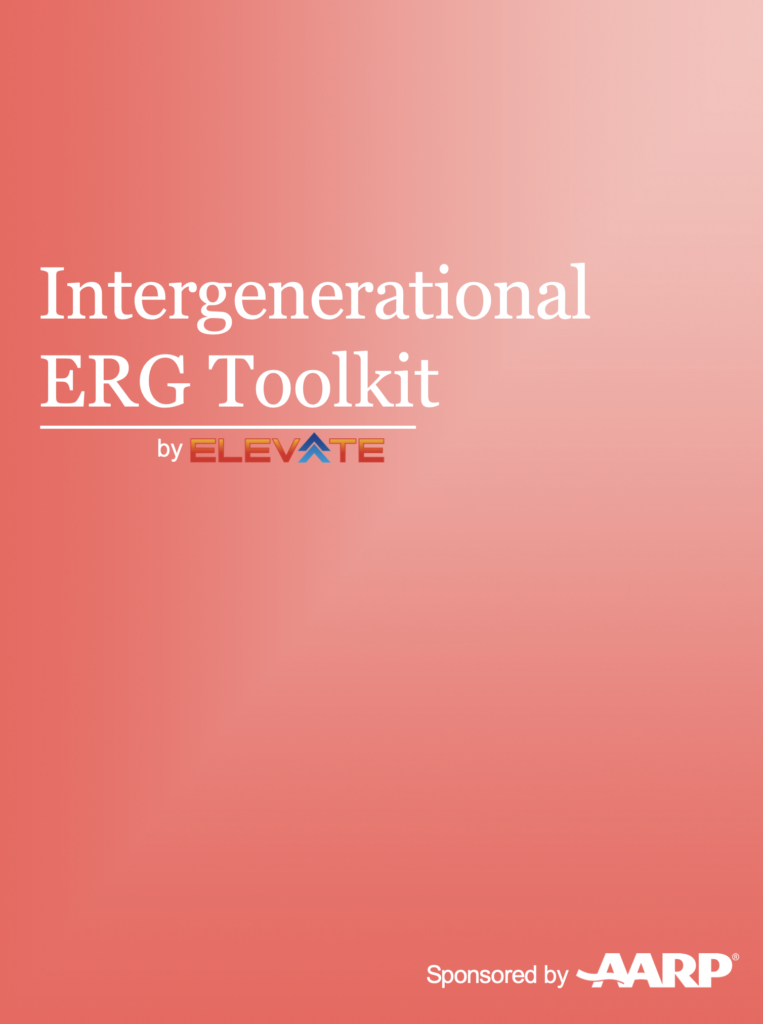A Toolkit for Bringing Generations Together in the Workplace


When it comes to generational stereotypes in workplace culture, unfortunately, there’s something for everyone. They go like this: Boomers are set in their ways and don’t do tech (actually, not so), while Millennials are the “participation trophy” generation, in need of constant praise (it’s more complicated than that). The youngest generation in the workforce today, Gen Z, has already been labeled too. They’re supposedly hooked on technology and too quick to question everyone else’s values (from their perspective, there’s no time to lose).
Like all stereotypes, those of the ageist variety are not only off-base, if they’re brought into the workplace they can undermine a company’s team spirit. Yet age discrimination remains an under-discussed aspect of the workplace conversation on diversity, equity, and inclusion (DEI). This presents an opportunity for positive change, since age-inclusive teams have been shown to have advantages in terms of innovation and stability.
A fresh idea for fostering teamwork among generations is the intergenerational employee-resource group (ERG). While ERGs have long been established to provide support and community for members of marginalized groups and their allies, an ERG that mixes the generations offers a new dynamic. To help employers form and foster such groups, AARP has crafted an Intergenerational ERG Toolkit to bring workers together to confront ageist stereotypes and create new bonds among workers of different generations and life experiences.
“There are as many as five generations in the workforce now and, given demographic trends of increased longevity and lower birth rates, it’s likely that the workforce is going to remain multi-generationally diverse for the foreseeable future,” said Heather Tinsley-Fix, senior advisor of financial resilience at AARP. “One of the ways leaders can add age to their DEI thinking and be more age inclusive is to encourage generations to interact with each other, rather than remain in silos.”
When multi-generational workers get to know each other better, ageist thinking–which can have a range of negative effects on workers, including an erosion of self-confidence–will likely dissipate. Stereotypes are attached to both young and experienced workers, and they’re often erroneously believed by the very employees they target.
How Assumptions Can Be Contagious

“[W]hat might really matter at work are not actual differences between generations, but people’s beliefs that these differences exist,” said Harvard Business Review in a 2019 story about the effects generational differences have on organizations. “These beliefs can get in the way of how people collaborate with their colleagues, and have troubling implications for how we people are managed and trained.”
“Young people think, ‘I’m being looked at as flighty or I want a medal all the time because I’m a Millennial,’” Tinsley-Fix said. “Then you survey their colleagues and they don’t think that way of them. Older workers think, ‘They probably think I’m slow and I’m tech-illiterate,’ and then you ask the younger co-workers and they don’t think that.”
Once those ageist stereotypes that may exist in a company are broken down, thanks to greater interactivity between workers of multiple generations, a more inclusive culture can be hatched. And when organizations have multi-generational workers safely and comfortably engaging with each other, Tinsley-Fix said, “you can really unleash the power of this mix of ages.”
“For a multigenerational workforce and consumer base,” Tinsley-Fix continued, “that might mean achieving successful mentoring and knowledge transfer, or capturing the $8.3 trillion 50-plus market.” (Statistics like those might help explain why intergenerational ERGs are catching on in corporations.)
The Intergenerational ERG Toolkit leverages research conducted over several years by AARP, with partners including the World Economic Forum and the Organisation for Economic Co-operation and Development contributing data and insights. The result is a highly informative publication, with background supporting age-diversification company benefits, step-by-step instructions on how to build intergenerational ERGs–or enhance those perhaps already established in a company–and tips for optimizing their effectiveness.
The Benefits for Corporations
Tinsley-Fix believes the toolkit, which she helped produce, is coming at just the right time for corporations seeking solutions to many contemporary issues. DEI efforts focused particularly on age can prove fruitful. “The global skills shortage, compounded by a relentless war for talent, are growing threats to an organization’s business continuity,” Tinsley-Fix said. “It can be easy for business leaders to fall into survival mode and view DEI initiatives as non-essential investments. However, studies show an age-inclusive workforce reduces turnover, increases profitability and boosts productivity.”
She points to a section in the toolkit outlining why a “future-forward” approach is critical in building intergenerational ERGs. There’s also a test leaders can take to see whether or not they’ve adopted such a disposition. One page provides a list of actions leaders can take to make sure they’re thinking in a “future-forward” manner, while trusting the employees who are building out an intergenerational ERG. Leaders should ask for honest feedback, the toolkit says, and encourage workers to have both “fixed and growth mindsets.” Among other steps, leaders should also ask for help when needed and be truly willing to learn from others, even if that means altering “what you think and how you view your surroundings.”
The same section features a chart illustrating the ways companies have pursued goal achievement through ERGs in the past versus what a future-forward leadership group might consider. For example, in the past, ERGs may have “led” other workers, but today and going forward they should “empower” their colleagues. Beforehand, there may have been “mentor matching” established by ERGs; in the future, they should perhaps “sponsor success.” And instead of “measuring employee engagement,” looking ahead, ERGs should “welcome workplace wellness.”
Mentoring Across Generations

Companies have historically used ERGs to solve certain business challenges, such as expanding into a new market. But these teams can make many different kinds of contributions and, as Tinsley-Fix said, in an intergenerational setting they can profoundly spur what she calls “bi-directional mentoring.”
“ERGs can enable those connections between generations so that older workers can learn from younger workers,” Tinsley-Fix said, “and younger workers can be mentored in, among other things, the soft skills and professionalism that older workers have established over longer stretches of time.”
Even companies that already have age-focused DEI initiatives underway can expand their methods. If there are already-established young professional ERGs as well as experienced employee ERGs in an organization, the AARP publication explains how to get them working together. They can be “expanded, with a broader umbrella that includes all employees interested in building an age-inclusive workplace–regardless of their age or generation,” according to the toolkit. “The work challenges and professional development experiences can be similar no matter the employee’s, age so that the same ERG support network can benefit all.”
While other areas of consideration may garner greater attention in DEI thinking on the part of leaders, there are a host of good reasons to embrace age diversity and inclusion as well. It offers its own share of company benefits, and the policies derived from a successfully age-integrated company will help sustain worker output and other positive outcomes long into the future.
“Research tells us that the presence of older workers on teams in an inclusive environment will increase that team’s productivity,” Tinsley-Fix said. “It’ll increase the quality of their outputs. So intergenerational teams are a good thing for business–full stop.”
Editor’s note: From Day One thanks our partner who sponsored this story, AARP.
Michael Stahl is a New York City-based freelance journalist, writer, and editor. You can read more of his work at MichaelStahlWrites.com, follow him on Twitter @MichaelRStahl, and order his first book, the autobiography of Major League Baseball pitcher Bartolo Colón, at Abrams Books.
The From Day One Newsletter is a monthly roundup of articles, features, and editorials on innovative ways for companies to forge stronger relationships with their employees, customers, and communities.